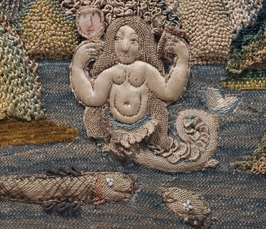Transparent Visuality: the Micaceous Image in Early Modern Europe
Research Seminar
- Data: 20.06.2022
- Ora: 16:00 - 17:30
- Relatrice: Ruth Ezra
- Luogo: Villino Stroganoff, Via Gregoriana 22, 00187 Rom
- Contatto: rodengo@biblhertz.it

Best thought of as the plastic of its time, mica’s robust transparency and thin cleavage gave it exceptional purchase as both a substrate and a surface: easily looked through, whether as a microscope slip or a protective glaze, it could just as easily be looked at, its peculiar glimmer, scrutinized as a curiosity in its own right. Mica is also light, impervious, and heat resistant, factors that rendered it an ideal cover for sundials and lanterns necessary on long maritime journeys. I argue that mica’s distinct physical properties made possible new experiences of “transparent visuality” in early modern Europe.
Ruth Ezra is Lecturer in the School of Art History at the University of St Andrews, where she specializes in the material and visual culture of early modern northern Europe. After completing her PhD at Harvard University, she served as a Postdoctoral Scholar with the USC Society of Fellows in the Humanities. From 2022-23 she will be a NOMIS fellow at eikones, writing Leaves of Glass: Mica between art and science in early modernity, a cultural biography of 'Muscovy glass’.
Scientific Organization: Francesca Borgo